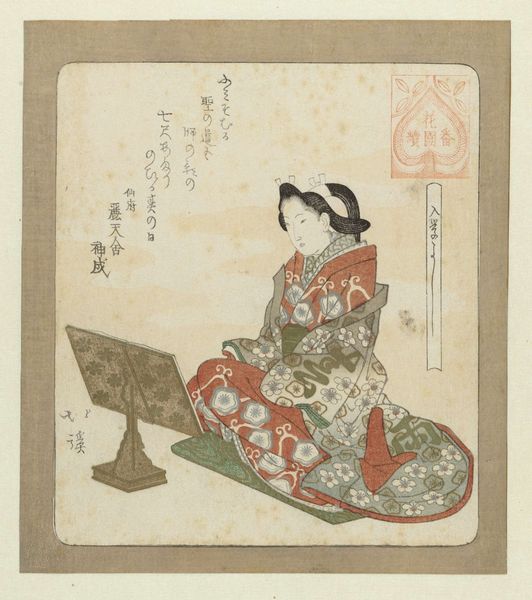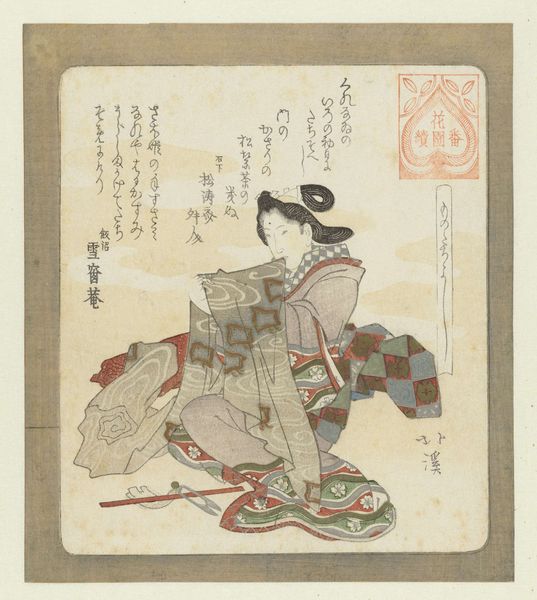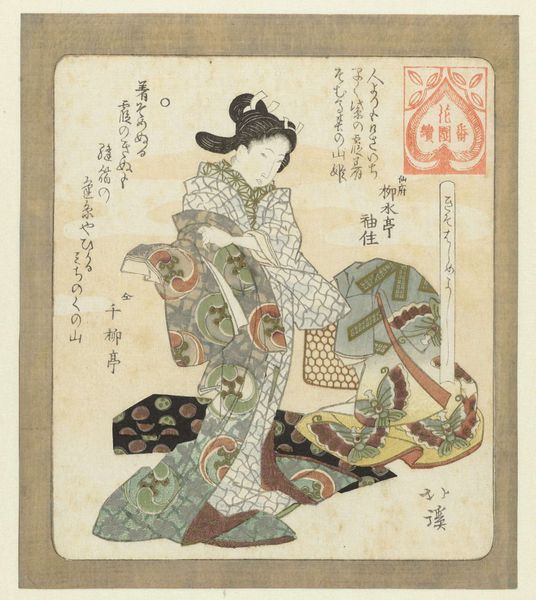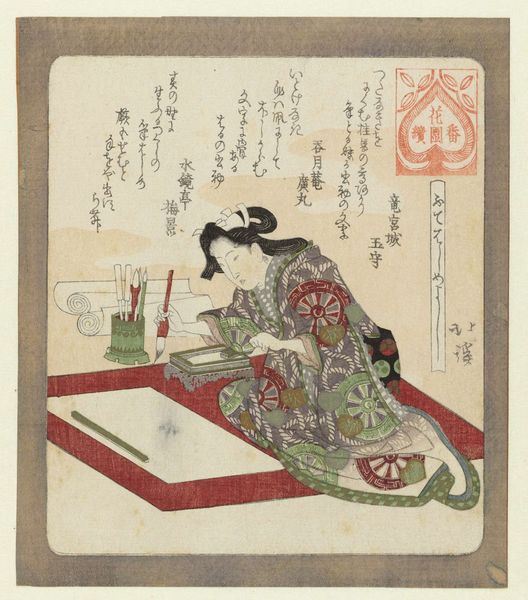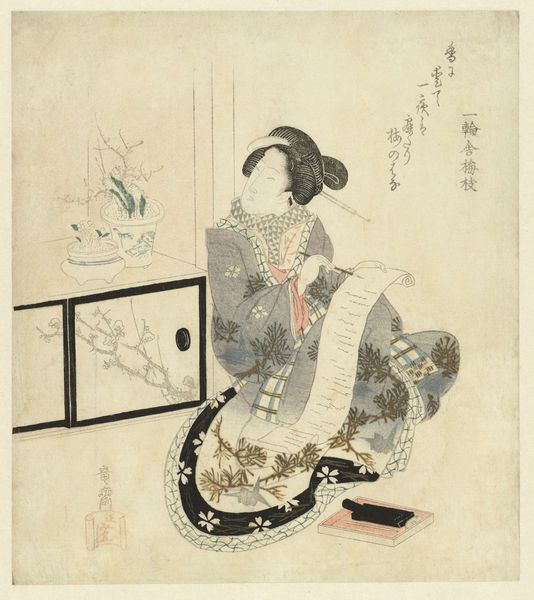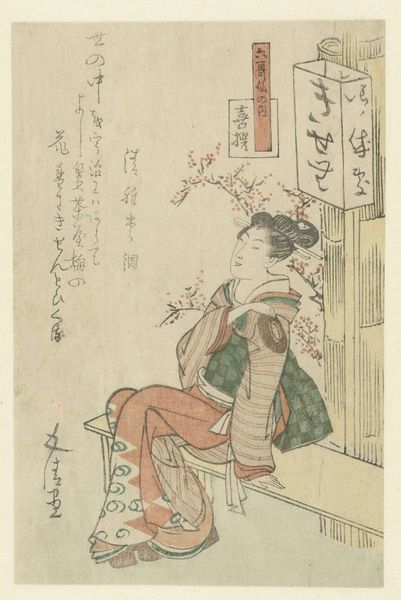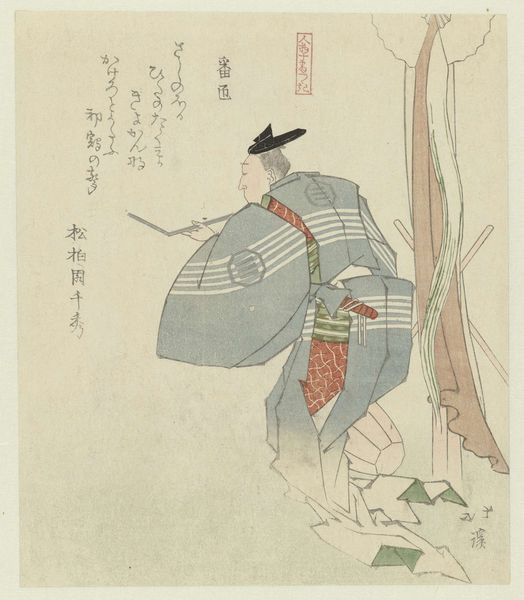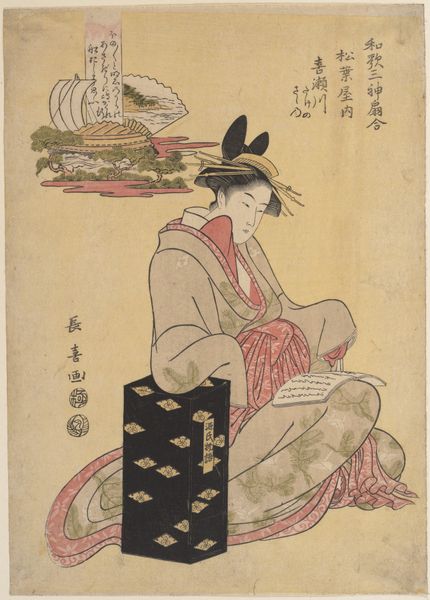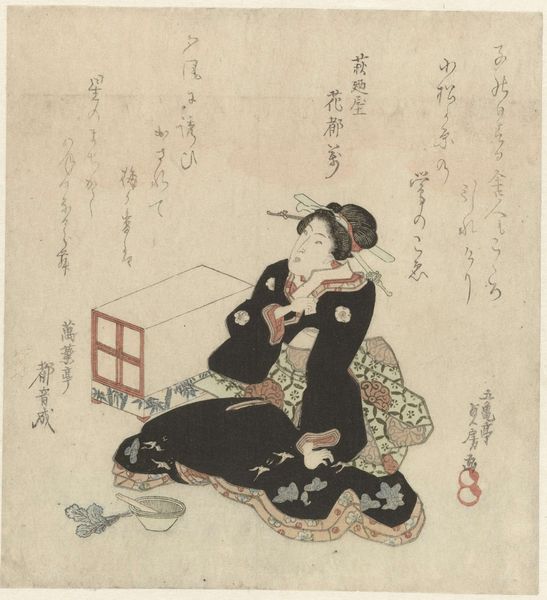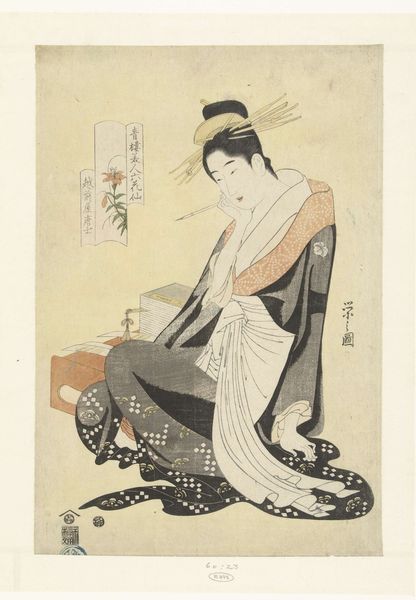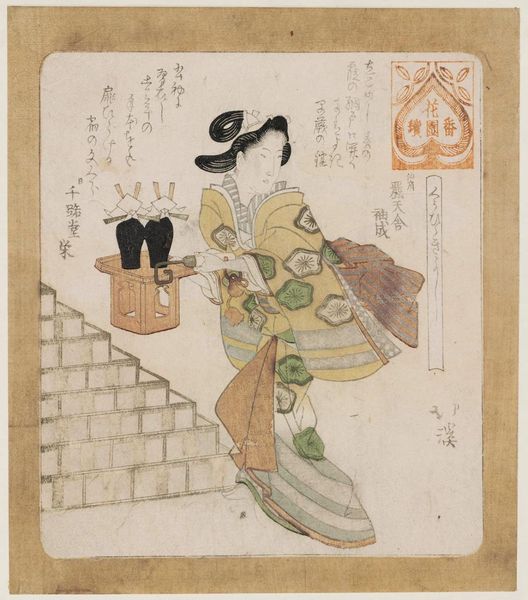
print, woodblock-print
#
portrait
#
toned paper
# print
#
asian-art
#
ukiyo-e
#
figuration
#
woodblock-print
#
japanese
#
watercolour illustration
Dimensions: height 205 mm, width 182 mm
Copyright: Rijks Museum: Open Domain
Curator: Let’s turn our attention to this intriguing Japanese woodblock print, "Het is goed om de tanden te verharden," made around 1822 by Totoya Hokkei. It's currently held in the collection of the Rijksmuseum. Editor: My first impression is one of focused domesticity. There's a quiet intensity in her gaze as she carefully works. And the patterned kimono provides such richness! Curator: The print is an example of Ukiyo-e, literally “pictures of the floating world.” It's important to consider the era, and the socio-political implications surrounding the production and consumption of images like this. They often depicted scenes of everyday life, catering to the emerging merchant class in Edo-period Japan. What message, what social commentary is intended in the choice to show this moment, this woman, doing this task? Editor: Symbolically, I am drawn to the title itself – "It is good to harden the teeth". That evokes a deep connection to health, resilience, and ritual practices associated with celebrating the growth and development of children. Is it possible this image ties into coming-of-age rituals, celebrating resilience, or the hopes that people have for the upcoming generations? Curator: Absolutely! "Hardening the teeth" could signify preparing for life's challenges, promoting strength and longevity through a ritual act. This particular print shows us a woman, but Ukiyo-e images were often intended for a male audience. I am prompted to wonder if there are gendered aspects to consider surrounding the cultural meaning and intention in Hokkei's inclusion of her domestic action here. What expectations are reinforced, and how does this moment act to create social values through this imagery? Editor: The color palette also carries weight. The blues and browns convey tranquility, and it creates a powerful statement of enduring cultural memory of the family and children's growth through ritualistic practice. Curator: It's such a multilayered image when considered through different lenses. Hokkei uses a simple moment, seemingly unremarkable on the surface, to express core cultural values and expectations regarding the domestic realm. Editor: I agree; analyzing how common iconography translates social practices gives the image additional resonance, especially over the temporal distance that separates us from the artist. I have found so much richness in this image through considering Hokkei's use of enduring symbols.
Comments
No comments
Be the first to comment and join the conversation on the ultimate creative platform.
